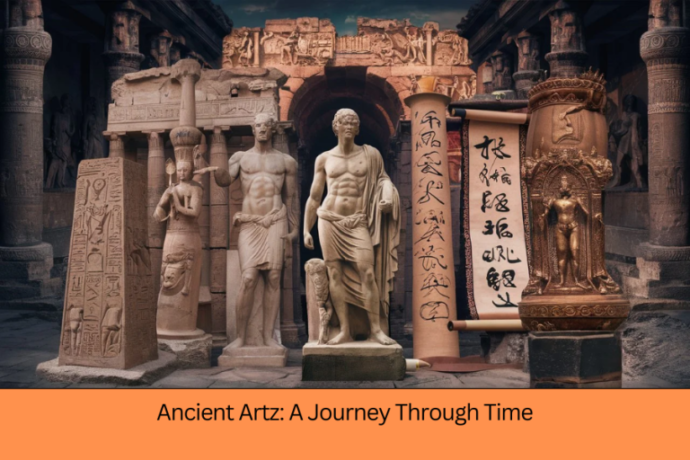
Abstract Expressionism, an influential art movement of the mid-20th century, marked a radical departure from traditional artistic conventions. It emerged in the United States during the 1940s and 1950s, primarily in New York City, earning the city its reputation as the new epicenter of the art world. This movement was characterized by an emphasis on spontaneous, automatic, or subconscious creation, and it sought to express the inner emotions and psyche of the artist. Here, we explore the origins, key figures, stylistic developments, and the impact of Abstract Expressionism on the art world.
Origins and Influences
Abstract Expressionism was born out of the confluence of various historical, cultural, and artistic influences:
European Modernism: The influx of European artists fleeing World War II brought avant-garde ideas to the United States. Artists such as Hans Hofmann and Marcel Duchamp introduced American artists to Cubism, Surrealism, and other modernist movements.
The work of Wassily Kandinsky and Piet Mondrian, with their emphasis on abstraction and spiritual expression, also profoundly influenced the nascent Abstract Expressionists.
The Great Depression and WPA: The Works Progress Administration (WPA) Federal Art Project of the 1930s provided employment for artists and fostered a sense of community among them. This program supported the development of new styles and encouraged artistic experimentation.
Psychoanalysis and Surrealism: The theories of Sigmund Freud and Carl Jung, particularly their ideas on the unconscious mind and archetypes, resonated with artists seeking to delve into the depths of human emotion and experience.
Surrealism’s emphasis on automatism and dream imagery inspired Abstract Expressionists to explore spontaneous and unplanned methods of creation.
Key Figures
Abstract Expressionism was not a cohesive style but rather a loosely connected group of artists united by their interest in exploring abstraction and expressing emotional intensity. Some of the key figures include:
Jackson Pollock: Known for his drip paintings, Pollock developed a technique of pouring and dripping paint onto a canvas laid on the floor, creating dynamic and intricate webs of color and texture. His work embodied the concept of “action painting,” where the act of creation was as important as the finished piece.
Mark Rothko: Rothko’s works are characterized by large fields of color and simple, rectangular forms. His paintings evoke deep emotional responses through their subtle variations in tone and hue, aiming to convey universal human emotions such as tragedy, ecstasy, and doom.
Willem de Kooning: De Kooning’s style combined abstract and figurative elements, often depicting distorted human figures with vigorous brushstrokes and bold colors. His series of “Women” paintings are particularly notable for their raw, expressive power.
Franz Kline: Kline’s works are known for their stark black and white compositions, using bold, sweeping brushstrokes to create dynamic, abstract forms. His paintings emphasize the physical act of painting and the direct impact of the artist’s hand.
Barnett Newman: Newman’s “zip” paintings feature narrow vertical lines on large monochromatic fields. These zips create a sense of spatial tension and invoke contemplation, focusing on the viewer’s emotional and intellectual response to the simplicity and scale of the works.
Stylistic Developments
Abstract Expressionism can be broadly divided into two main styles: Action Painting and Color Field Painting.
Action Painting: Action Painting, associated with artists like Jackson Pollock and Willem de Kooning, emphasizes the physical act of painting. The artist’s movements and gestures are central to the creation of the artwork, resulting in dynamic, gestural compositions.
This style often involves techniques such as dripping, splattering, and vigorous brushwork, conveying a sense of spontaneity and emotional intensity.
Color Field Painting: Color Field Painting, exemplified by artists like Mark Rothko and Barnett Newman, focuses on large areas of solid color spread across the canvas. These works emphasize color as the primary means of expression and seek to evoke an emotional response through the visual impact of color and form.
The compositions are usually simple and meditative, encouraging viewers to engage deeply with the subtle variations and interplay of colors.
Impact and Legacy
Abstract Expressionism had a profound impact on the art world, shaping the course of modern and contemporary art in several ways:
New York as Art Center: The movement established New York City as the new center of the art world, shifting the focus from Paris. This shift had lasting effects on the global art market and the development of subsequent art movements.
Artistic Freedom and Expression: Abstract Expressionism championed artistic freedom and individual expression, breaking away from traditional forms and subjects. This emphasis on personal vision and emotional depth influenced later movements such as Pop Art, Minimalism, and Conceptual Art.
Influence on Contemporary Art: The techniques and concepts developed by Abstract Expressionists continue to inspire contemporary artists. The exploration of abstraction, the emphasis on process, and the focus on the viewer’s emotional experience remain central to many artists’ practices today.
Art Market and Institutions: The success and recognition of Abstract Expressionist artists helped to establish the prominence of galleries, museums, and collectors in the United States. Major exhibitions and acquisitions by institutions like the Museum of Modern Art (MoMA) in New York solidified the movement’s place in art history.
Conclusion
Abstract Expressionism represents a pivotal moment in the history of art, characterized by a radical departure from traditional aesthetics and a profound exploration of the human psyche through abstract forms. The movement’s emphasis on individual expression, emotional intensity, and innovative techniques has left a lasting legacy, influencing countless artists and shaping the trajectory of modern and contemporary art. By breaking down barriers and redefining what art could be, Abstract Expressionists opened up new possibilities for creativity and continue to inspire artists and audiences around the world.


